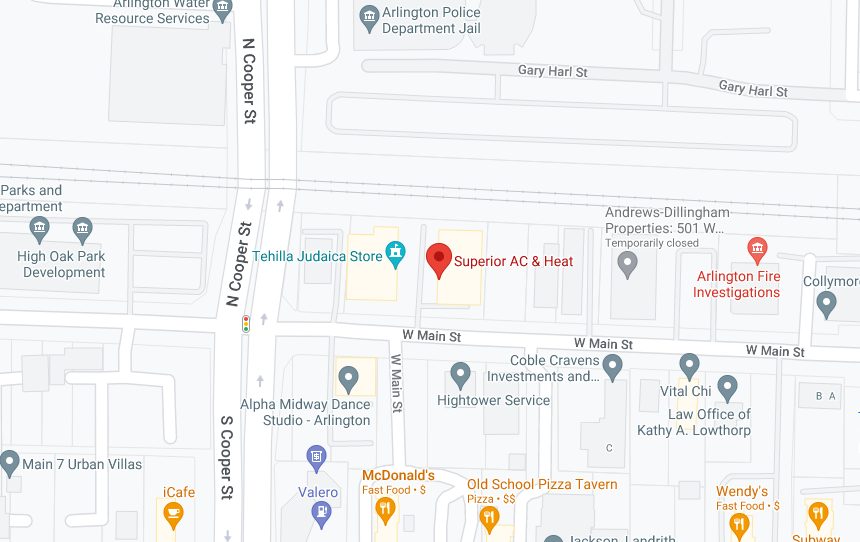Did you know that the air inside your home can be up to five times more polluted than the air outside? Indoor air pollution is a serious issue. It can stem from the allergens you bring in as well as the everyday household products that you use. And it’s something many people don’t think about.
In this blog post, we will discuss 7 ways that you can reduce indoor air pollution in your home. Following these tips will help keep your family safe and healthy!
1. Replace your air filter regularly.
The air filter is important to replace regularly because it helps keep the air in your home clean. It captures dust, pollen, and other particles so they don’t circulate in the air. This keeps your family healthy and reduces the number of allergens in your home.
The allergens in your home can cause a variety of sicknesses, including asthma, allergies, and respiratory problems. By reducing the number of allergens in your home, you can help keep your family healthy and reduce their risk of getting sick.
2. Clean your air ducts and vents.
The air ducts and vents in your home or place of business play a vital role in the quality of the air you breathe. Over time, these ducts and vents can become clogged with dust, pollen, and other airborne contaminants.
If they are not cleaned on a regular basis, clogged air ducts can lead to poor indoor air quality. This causes respiratory problems. Regular cleaning of your air ducts and vents will help to improve the quality of the air you breathe and keep you and your family healthy.
There are a few ways to clean air ducts and vents. You can use a vacuum cleaner with the upholstery brush attachment, or a crevice tool. For more severe cases, you can use a rotary brush or a compressed air duct blaster.
You should never use water to clean air ducts and vents, as it can cause mold growth. If you have pets, you may want to consider using an air purifier in your home. Air purifiers can help remove pet dander, dust mites, and other allergens from the air.
3. Seal any leaks in your home’s exterior.
Another way to improve indoor air quality is to seal any leaks in your home’s exterior. Leaks often occur around windows and doors, and they can allow outdoor contaminants to seep into your home.
In addition, leaks can also allow moist air to enter your home, leading to mold and mildew growth. By taking the time to seal any leaks, you can help to improve the quality of the air inside your home and create a healthier indoor environment.
4. Install an attic fan or roof vent.
Attic fans and roof vents help improve the air quality of your home by drawing in cooler, fresh air from outside and expelling stale, hot air from inside.
There are a few things to keep in mind when deciding which attic fan or roof vent is right for your home. The size of your attic is the most important factor. The larger the space, the more ventilation you’ll need. Another thing to think about is the climate. If you live in a hot, humid climate, you’ll need a more powerful attic fan or roof vent to keep your home comfortable.
5. Install a CO₂ detector.
People spend about 90 percent of their time indoors. This makes indoor air quality vital to one’s overall health. CO₂ monitors can help improve indoor air quality by measuring the levels of CO₂ in your home. CO₂, or carbon dioxide, is a colorless, odorless gas that is produced when people breathe. These gases can build up in poorly ventilated homes and can lead to a variety of health problems.
Symptoms of CO₂ poisoning include headaches, dizziness, nausea, and fatigue. In severe cases, it can lead to death. CO₂ detectors are an important tool in ensuring that levels aren’t getting out of control and posing a threat to the occupants.
6. Use green cleaning products.
Green cleaning products ensure that chemical-based pollutants are less of an issue in your home. When seeking out green cleaning products, here are some helpful tips:
- Look for natural, plant-based ingredients.
- Avoid harsh chemicals and fragrances.
- Make your own cleaners whenever possible.
- Choose multipurpose cleaners to save money and reduce waste.
- Store all cleaning products safely out of reach of children and pets.
7. Upgrade to a high-efficiency furnace or air conditioner.
Looking for a high-efficiency furnace or air conditioner? Pay close attention to the “High Annual Fuel Utilization Efficiency” (AFUE) rating. This measures the percentage of fuel that’s actually used to heat your home. The higher the AFUE, the better the performance. Also, consider the size of your home, and make sure the AC has enough coverage.If you’re not sure how to measure this or have other questions about what makes for an efficient AC, Superior AC and Heat can answer all your questions. Just give us a call. We can also provide guidance and knowledge on replacement or repairs. Contact us today with whatever your needs are. We’re happy to help!




